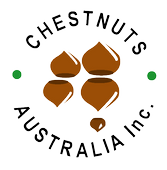Composition of European chestnut (Castanea sativa Mill.) and association with health effects: fresh and processed products
De Vasconcelos MC, Bennett RN, Rosa EA, Ferreira-Cardoso JV.
CITAB/IB&Q-Centre for the Research and Technology of Agro-Environment and Biological Sciences, Integrative Biology and Quality Area, Universidade de Trás-os-Montes e Alto Douro, Vila Real, Portugal.
Abstract
Chestnut fruits are highly regarded and widely consumed throughout Europe, America and Asia. Various commercial forms are available, e.g. fresh and industrially processed. There have been various reviews on the composition of chestnut fruits but there has not been a comprehensive review of the different health benefits that this fruit can provide. This review is focused on the composition and associated health effects of European fresh chestnut (Castanea sativa Mill.) fruits and their home-processed and industrial products, e.g. boiled, roasted, frozen, and ‘marron glacées’. We also expand the knowledge of chestnut uses by presenting data for other chestnut materials that have potential applications as new foods, as sources of antioxidants, and as sources of other useful bioactives. There is considerable literature data on nutrients in fresh chestnut fruits but less information on bioactive non-nutrients such as phenolics. Chestnuts are mostly consumed as processed forms, and the different types of processing clearly affect the nutrient and non-nutrient composition of the fruits. The benefits that this fruit can provide for human and animal health are numerous, but it is clear that improvements can be made for both production and quality of chestnut products, e.g. genetic selection and optimizing industrial processing.
